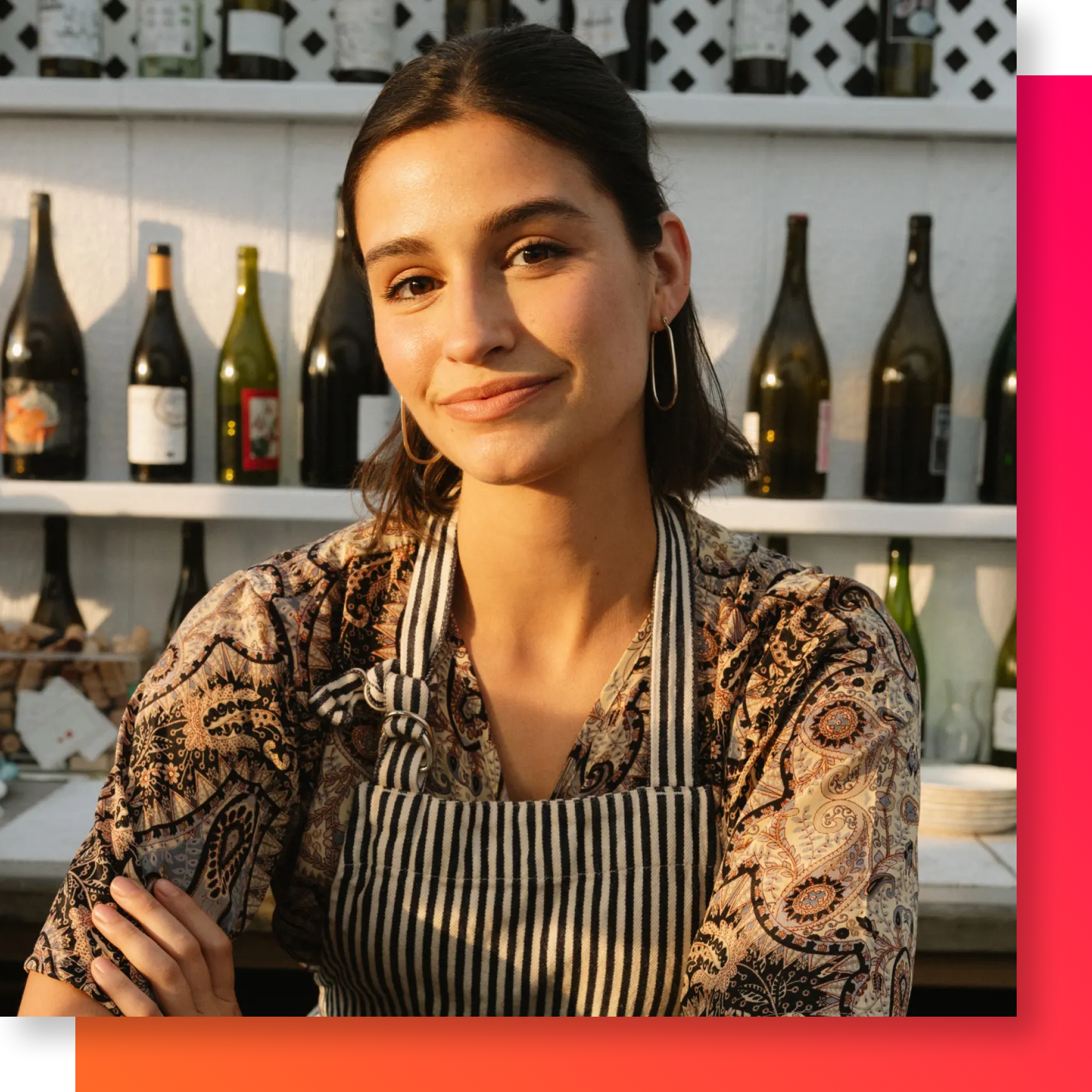As influencer marketing hits new heights, you might be inspired to launch your very own campaign. But with 50M+ self-proclaimed influencers out in the wild, how do you choose the best for your brand?
Luckily there’s a consensus within the creator community that categorizes the multitude of influencers, from nano-influencers with less than 10K followers to mega-influencers with millions of followers.
The common misconception is that bigger is better, but that may only sometimes be true as there are many benefits to partnering with smaller influencers. Each influencer tier comes with pros and cons that are suitable for different marketing goals.
How Many Followers Make an Influencer?
Follower count is the number one obsession between creators and marketers, it often determines the difference between forging a brand partnership deal or simply sending samples of the product. While a follower count is the number one signpost of an influencer’s…influence, it’s by no means the only one – but we’ll get to that later.
The minimum number of followers you need to be considered an influencer is 1K which fits into the nano category. If you were to put a thousand people into a town hall, it would be pretty loud, but relative to the internet town hall of 5.17B, it’s a drop in the ocean.
Your 2025 Playbook for Influencer Marketing
Scale your influencer marketing efforts with industry insights, projections, and data
Before we delve into the numbers, It’s worth noting that each platform varies wildly in function and engagement. Getting 1M followers on TikTok, a discovery app, is far easier than IG and Facebook, which serve primarily as social networks. So while these benchmarks are generalized, remember some platforms like YouTube will take longer to build.
The five influencer tiers:
- Nano: 1K-10K followers
- Micro: 10K-100K followers
- Mid-tier: 100K-250K followers
- Macro: 250K-1M followers
- Mega: 1M+ followers
Yet follower count, while a useful snapshot, is only one of many metrics worth looking at when choosing an influencer. Several other engagement metrics, including likes, comments, and shares, count towards an influencer’s efficacy. Follower counts are also only partially accurate as a certain percentage of bots often make up that number.
Forbes recently wrote that among the 50M global creators, only 4% who earn over $100K a year are considered professional. So while digging into the various tiers of influencers, using follower count is a good starting point, but not where conclusions are drawn.
Influencer Tiers Strengths and Weaknesses
Each type of influencer comes packed with its strengths and weaknesses, so you must be clear on what you want to achieve. Sometimes, depending on your marketing objectives and your brand’s values, partnering with smaller influencers will generate better results than working with large ones.
Take a look through the pros and cons of each tier to find the level of influencer you need for your next campaign.
The Nano-Influencer: 1K-10K Followers
All influencers start small, but sometimes small can prove mighty. Nano-influencers may not have the reach, but they might have the niche some brands are looking for. On this level, nano-influencers are not lofty stars but down-to-earth people who are relatable like a friend.
Pros
Nano influencers usually gain a following by carving out a niche and building strong relationships with their followers. Although nano influencers’ follower sizes are modest compared to their bigger counterparts, they usually have an active and engaged community. And because their community is relatively small, it allows them to get personal with their followers and form deeper relationships.
When brands collaborate with nano influencers, their followers want to support the influencer they love. With a smaller but more engaged audience, there’s less room for error, so it’s important to find nano influencers who like and respect your brand’s product. Get this part right and your brand can quickly gain attention and sales.
The biggest pro of working with nano influencers is their low cost and access to their highly engaged target consumer base. For example, it only costs between US$20 and US$250 per post to get your brand in front of their audience, with YouTube costing more. If your campaign has a limited budget, collaborating with nano-influencers may be the way to go.
Cons
The biggest drawback to working with creators just starting is the lack of experience in social media marketing. You’ll need some patience and extra time to help them get started if you want to ensure your campaign (and partnership) is successful. Influencers with followers under 10K will not have access to some platform privileges like Instagram’s swipe-up feature that allows links directly to their story. Finally, working with several influencers simultaneously can be resource-intensive and stressful, especially if coordinating a launch.
The Micro-Influencer: 10K-100K Followers
At this stage in an influencer’s growth, the prospects of making a career out of their hobby become very real. For many, this is the beginning brand partnerships and product endorsements.
@alexanderkochashvili Happy Friday everyone 🙌🏼✨
Pros
Although partnering with micro-influencers costs more than nano-influencers, they are still considered affordable. For instance, brands will have to pay between $35 to $1,000 per post with YouTube costing more. Micro-influencers have high engagement rates because their community size still allows them to connect closely with their followers and form those personal relationships.
Micro-influencers are people who usually have 9-5 day jobs, so their content is more relatable than full-time influencers in higher tiers. They are more likely to post original content, respond to comments, and stay true to their audience.
Cons
As these influencers begin to see success, without prior experience or representation to manage deals, pricing can vary wildly and must be scrutinized. As a result, the time it takes to reach a partnership agreement might take longer, especially if scaled across multiple creators. You should also keep in mind some influencers may buy bots as followers to boost them into the micro-influencer category. So if you decide to work with micro-influencers, it’s wise to use tools to check their follower authenticity to ensure they have earned all their followers.
Mid-tier Influencers: 100K-250K Followers
With a six-digit following, these creators are in a stage of high growth and developing a serious side hustle. They offer a perfect blend of reach, engagement, and credibility at a price point that isn’t going to break the bank.
Pros
Many creators at this level will have enough experience under their belt that make them adept at collaborating with brands and producing relevant content on the fly. Whether it’s social takeovers, promotional giveaways, contests, and detailed product reviews, they know how to weave a brand narrative tastefully compared to smaller influencers.
The ambition to scale their efforts into a full-time capacity often translates to a higher level of dedication and focus. At this stage, there’s greater potential for longer-term partnerships as their status is solidified and the chances of further growth are high. With posts costing anywhere from $150-$6,000, campaigns can be well within the scope of a reasonable marketing budget.
Cons
Mid-tier influencers, have great reach potential with their significant audience size, yet engagement rates do tend to be lower and this can be disappointing with the expectations that come with a larger price tag. Be prepared to compete with other brands too as mid-tier influencers often receive more collaboration offers, which can lead to their feed being saturated with sponsored content. Brand safety is a consideration at this level, as these creators may not have experienced any controversy yet, with the stakes higher than ever.
The Macro-Influencer: 250K-1M Followers
Starting at a quarter-million followers, these influencers are well on their way to stardom. Chances are, this influencer has enough revenue streams to transition to working on content full-time. This transition has drastic implications for availability, quality, and output.
@montana.boyz =And it feels so nice #fyp #montanaboyz
Pros
Beyond the numbers, macro-influencers, through time and practice, are masters in their field of interest. These social media professionals have broader reach, appeal, and shareability, so it’s no surprise that bigger brands are active in scouting them out. Despite providing a more extensive community, their content is generally focused on one interest their followers enjoy, be it comedy, footwear, or fashion. Thanks to their broad audience, macro-influencers can reach a diverse demographic in a single post.
Cons
Macro-influencers are great for established brands due to their large following, but they are more costly compared to smaller influencers ranging from US$350 to US$7,000 per post, with YouTube and Facebook costing more. At this level, macro-influencers can afford to refuse deals that don’t suit their audience or lowball their previous earnings.
At this price point, you don’t want your brand to be tuned out because followers are used to seeing the same type of content all the time. Consider working with macro-influencers who do not already promote something related to your industry to keep brand focus high.
Finally, macro-influencers have a hard time building a personal connection with their audience, which means less engagement per follower. There are just too many followers commenting or direct messaging for these influencers to respond to.
The Mega-Influencer: 1M+ Followers
Celebrities in their own right, mega-influencers have grafted hard constantly releasing content with some coming up relatively quickly. These creators likely have a team working for them to lighten the load so they can focus on what matters the most – creating high-quality content.
@rappingchef the rapping chef 👨🏾🍳 #gumbo #creole #cajuncooking #nola #comfortfood #therappingchef #k18hairflip
Pros
If your campaign goal is to boost brand awareness quickly, then look no further than mega-influencers. With their massive communities, mega-influencers can offer a diverse audience with broad demographics delivering the quickest exposure in a single post. These creators are well-trained in how to deliver professional branded campaigns, saving time in preparation and training beforehand. At this notoriety, a mega-influencer’s status and popularity make for a significant brand endorsement.
Cons
Following a mega-influencer might feel akin to following a celebrity, often losing the intimacy and charm found in smaller, more engaged communities. Mega-influencers, costing at least $10K per campaign, are typically favored by large brands due to their expansive reach. However, as audience size increases, so does the diversity of interests, leading to lower engagement rates. The broad set of demographics makes it challenging for marketing teams to deliver targeted messages effectively.
Find the Right Influencer With Viral Nation
With so many creators and tiers to keep track of, finding the right influencers for your campaign can be tricky and time-consuming. Especially as prices and quality vary widely, it’s difficult to know how a partnership will play out until you begin.
Viral Nation has the world’s largest talent roster spanning 35 verticals meaning there’s a creator for every niche. From micro to mega, our exclusive creators run the gambit and our talent team works hard to find the perfect partnerships to match each brand’s goals and core values.






